Dolores Hayden Quotes & Sayings
Enjoy the top 10 famous quotes, sayings and quotations by Dolores Hayden.
Famous Quotes By Dolores Hayden
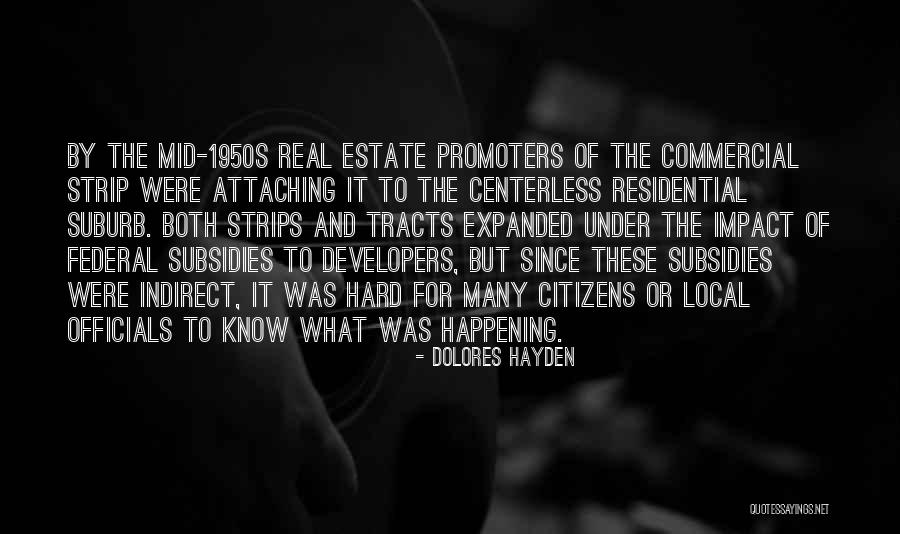
By the mid-1950s real estate promoters of the commercial strip were attaching it to the centerless residential suburb. Both strips and tracts expanded under the impact of federal subsidies to developers, but since these subsidies were indirect, it was hard for many citizens or local officials to know what was happening. — Dolores Hayden
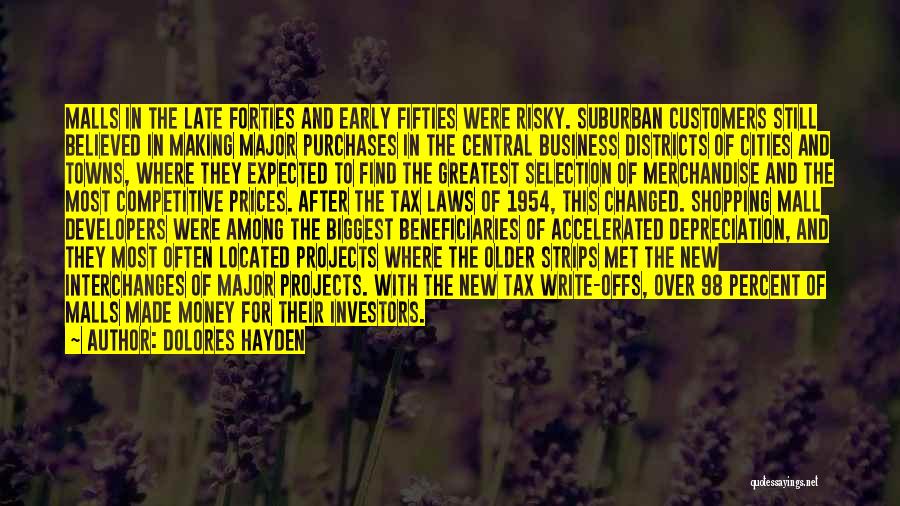
Malls in the late forties and early fifties were risky. Suburban customers still believed in making major purchases in the central business districts of cities and towns, where they expected to find the greatest selection of merchandise and the most competitive prices. After the tax laws of 1954, this changed. Shopping mall developers were among the biggest beneficiaries of accelerated depreciation, and they most often located projects where the older strips met the new interchanges of major projects. With the new tax write-offs, over 98 percent of malls made money for their investors. — Dolores Hayden
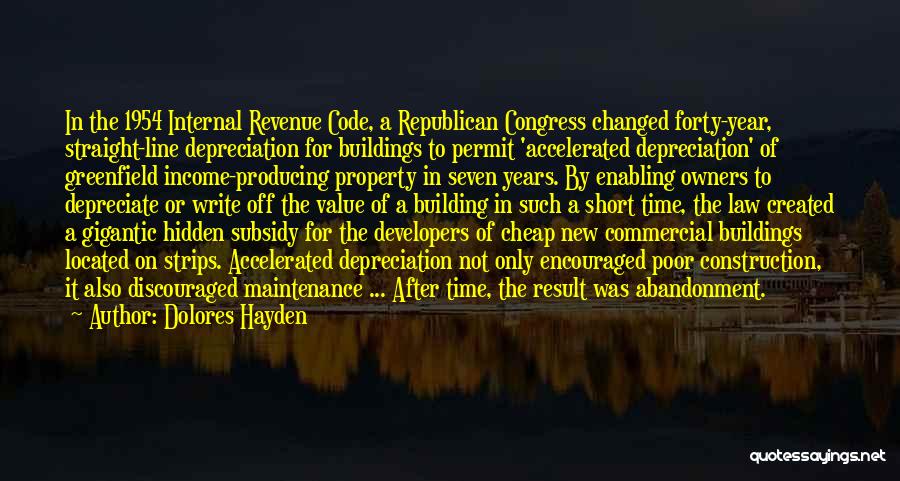
In the 1954 Internal Revenue Code, a Republican Congress changed forty-year, straight-line depreciation for buildings to permit 'accelerated depreciation' of greenfield income-producing property in seven years. By enabling owners to depreciate or write off the value of a building in such a short time, the law created a gigantic hidden subsidy for the developers of cheap new commercial buildings located on strips. Accelerated depreciation not only encouraged poor construction, it also discouraged maintenance ... After time, the result was abandonment. — Dolores Hayden
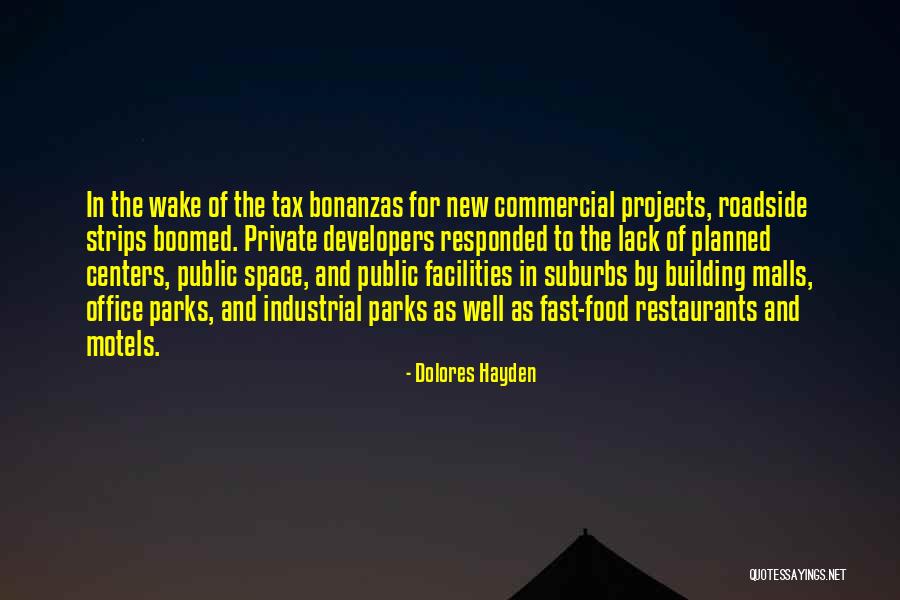
In the wake of the tax bonanzas for new commercial projects, roadside strips boomed. Private developers responded to the lack of planned centers, public space, and public facilities in suburbs by building malls, office parks, and industrial parks as well as fast-food restaurants and motels. — Dolores Hayden
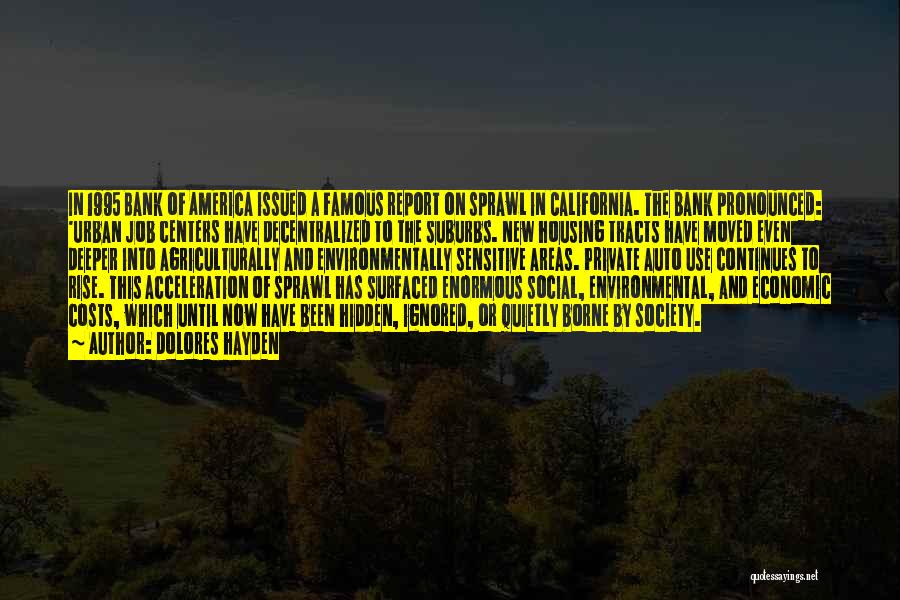
In 1995 Bank of America issued a famous report on sprawl in California. The bank pronounced: 'Urban job centers have decentralized to the suburbs. New housing tracts have moved even deeper into agriculturally and environmentally sensitive areas. Private auto use continues to rise. This acceleration of sprawl has surfaced enormous social, environmental, and economic costs, which until now have been hidden, ignored, or quietly borne by society. — Dolores Hayden
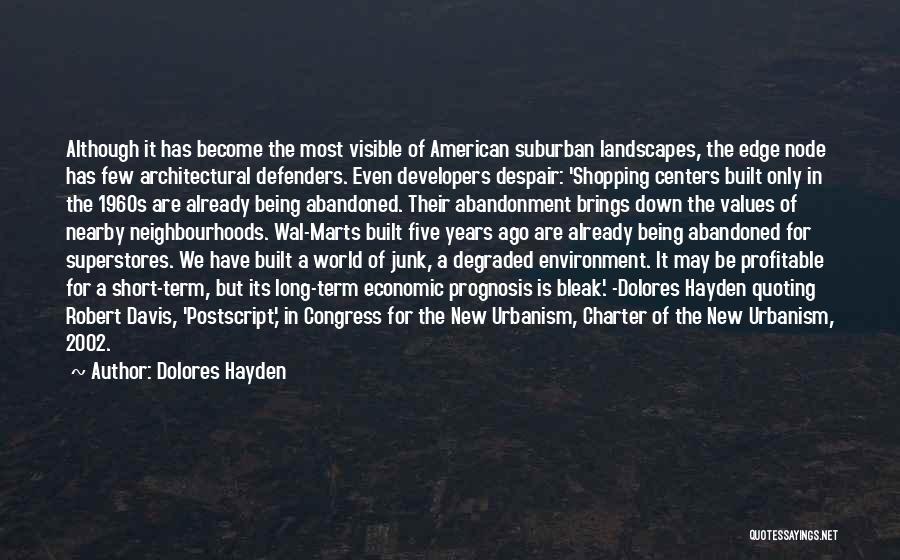
Although it has become the most visible of American suburban landscapes, the edge node has few architectural defenders. Even developers despair: 'Shopping centers built only in the 1960s are already being abandoned. Their abandonment brings down the values of nearby neighbourhoods. Wal-Marts built five years ago are already being abandoned for superstores. We have built a world of junk, a degraded environment. It may be profitable for a short-term, but its long-term economic prognosis is bleak.' -Dolores Hayden quoting Robert Davis, 'Postscript,' in Congress for the New Urbanism, Charter of the New Urbanism, 2002. — Dolores Hayden
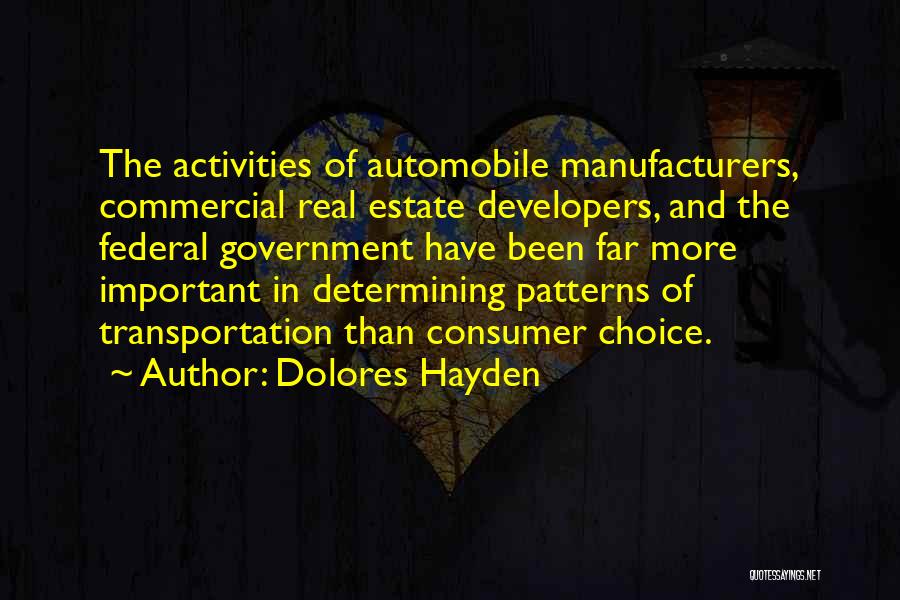
The activities of automobile manufacturers, commercial real estate developers, and the federal government have been far more important in determining patterns of transportation than consumer choice. — Dolores Hayden
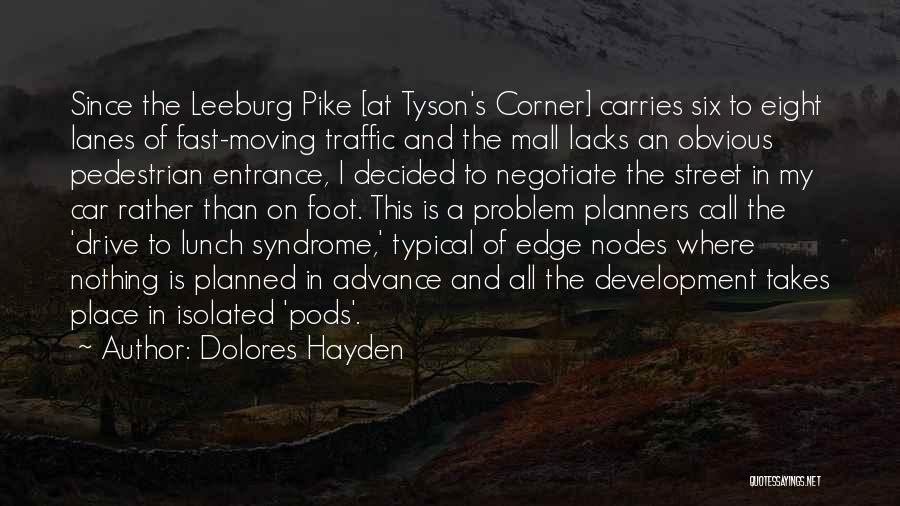
Since the Leeburg Pike [at Tyson's Corner] carries six to eight lanes of fast-moving traffic and the mall lacks an obvious pedestrian entrance, I decided to negotiate the street in my car rather than on foot. This is a problem planners call the 'drive to lunch syndrome,' typical of edge nodes where nothing is planned in advance and all the development takes place in isolated 'pods'. — Dolores Hayden
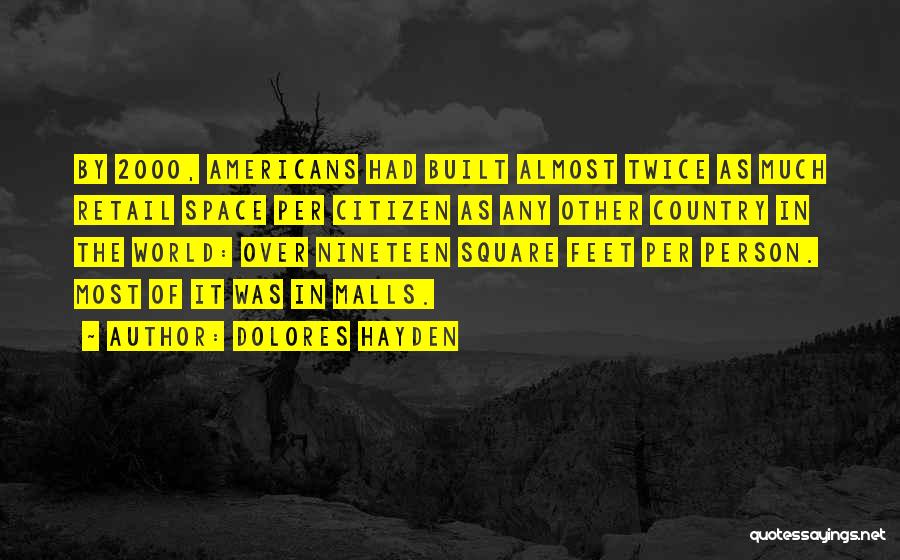
By 2000, Americans had built almost twice as much retail space per citizen as any other country in the world: over nineteen square feet per person. Most of it was in malls. — Dolores Hayden
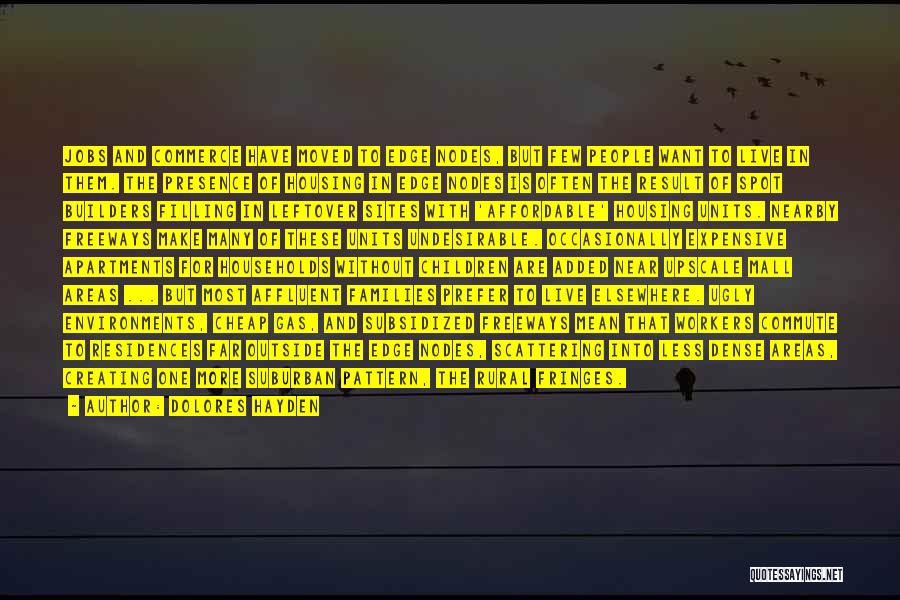
Jobs and commerce have moved to edge nodes, but few people want to live in them. The presence of housing in edge nodes is often the result of spot builders filling in leftover sites with 'affordable' housing units. Nearby freeways make many of these units undesirable. Occasionally expensive apartments for households without children are added near upscale mall areas ... but most affluent families prefer to live elsewhere. Ugly environments, cheap gas, and subsidized freeways mean that workers commute to residences far outside the edge nodes, scattering into less dense areas, creating one more suburban pattern, the rural fringes. — Dolores Hayden





